PATHÉ PROJECTOR
AMPLIFIERS
These circuits are shown to assist
anyone who may be restoring these amplifiers, they are intended only
as a guide and no responsibility can be accepted for any damage or
injury resulting from their use
Amplifiers of this type use
high voltages, so repairs or modifications should only be made by
suitably qualified or experienced persons.
If you don't know what you are
doing, don't do it!
PATHÉ VOX
Original circuit
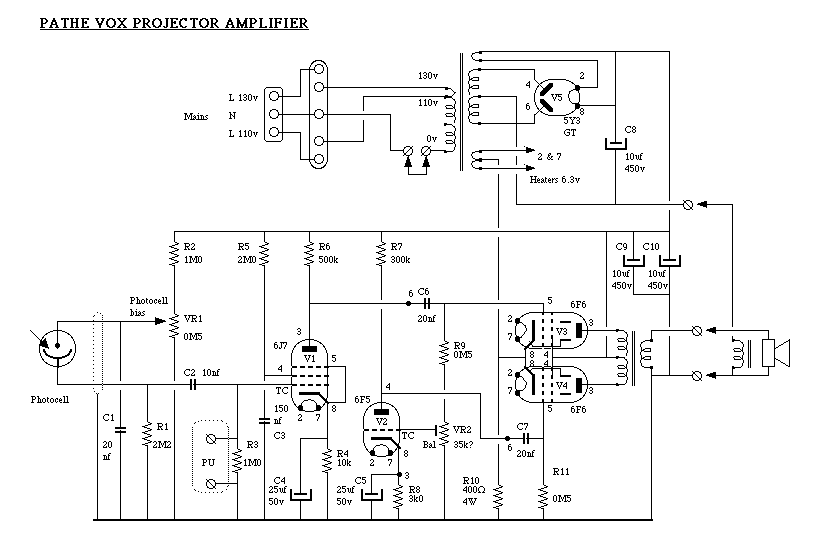
Modified circuit
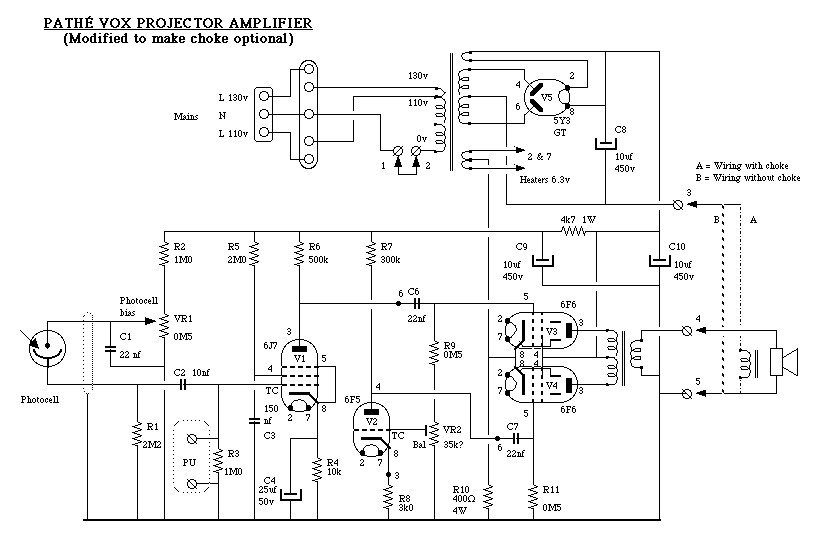
Points to note:
Never run a valve amplifier with the loudspeaker disconnected,
this will generate high voltages which could damage the output
transformer or output valves.
If the original loudspeaker plug is not available, the amplifier
can be tested by bridging the appropriate pins on the loudspeaker
socket but make sure the choke terminals are solidly connected. If
the choke terminals are open circuited, voltages in excess of 450v
will appear between the metal cans of the smoothing capacitors and
the charge will remain after the amplifier has been switched off. YOU
HAVE BEEN WARNED!!!
Some capacitors followed the pre-WWII German practice of quoting
the capacitance in centimetres. The conversion factor is 1cm =
1.13pf.
VR2 balances the drive to the output valves. It can be
conveniently set up by feeding in a constant tone and adjusting VR2
for minimum signal appearing at the cathodes of V3 and V4.
PATHÉ
SUPERVOX
Original circuit
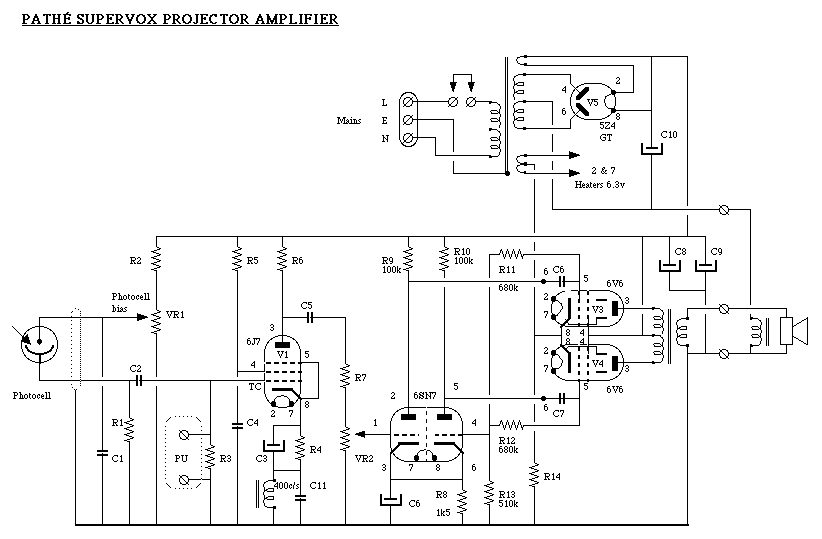
Modified circuit
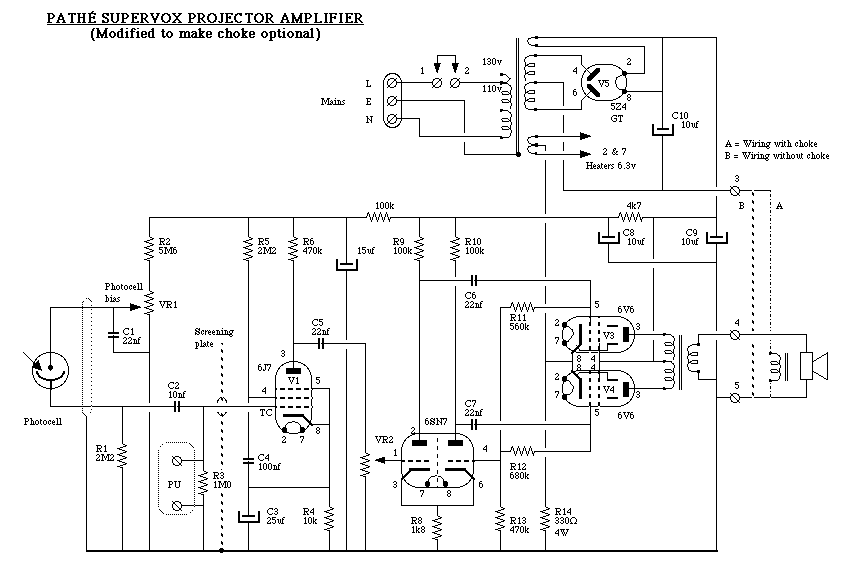
Points to note:
Never run a valve amplifier with the loudspeaker disconnected,
this will generate high voltages which could damage the output
transformer or output valves.
If the original loudspeaker plug is not available, the amplifier
can be tested by bridging the appropriate pins on the loudspeaker
socket but make sure the choke terminals are solidly connected. If
the choke terminals are open circuited, voltages in excess of 450v
will appear between the metal cans of the smoothing capacitors and
the charge will remain after the amplifier has been switched off. YOU
HAVE BEEN WARNED!!!
PATHÉ SON
MkI
Circuit of one of two
amplifiers of this type, the circuit of second amplifier is almost
identical.
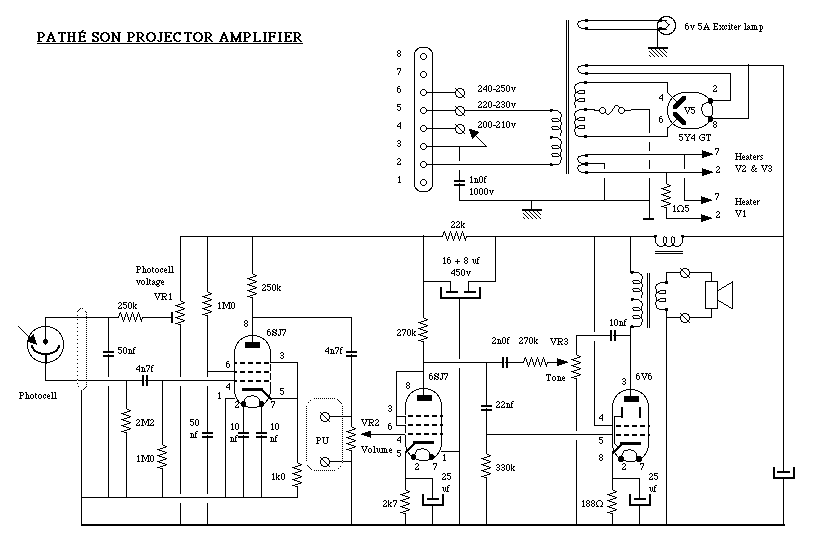
Points to note:
Never run a valve amplifier with the loudspeaker disconnected,
this will generate high voltages which could damage the output
transformer or output valves.
In one of these amplifiers the second valve appears to have
originally been connected as a pentode but later modified to work as
a triode; a suppressor grid decoupling capacitor is still in place
but disconnected. In the second amplifier it appears to have been
triode-connected from new and there is no sign that a suppressor grid
capacitor was ever fitted.
The tone control does not appear to function particularly well.
PATHÉ SON
MkII
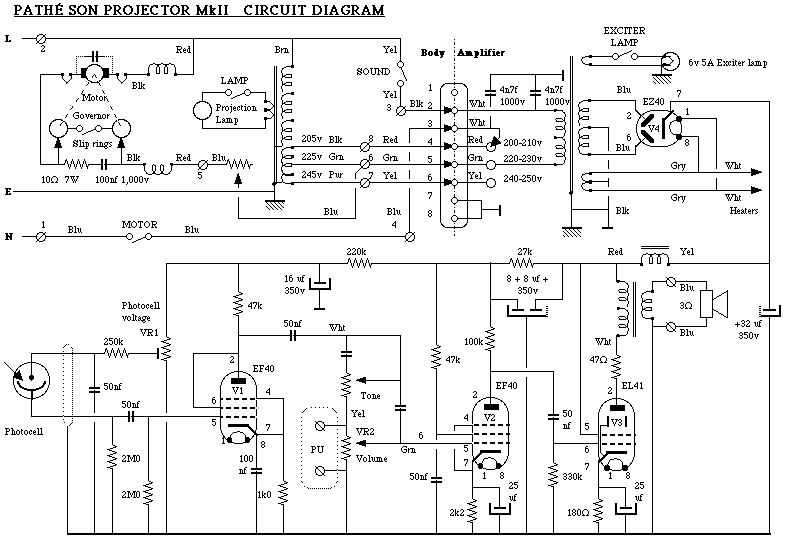
Points to note:
Never run a valve amplifier with the loudspeaker disconnected,
this will generate high voltages which could damage the output
transformer or output valves.
The first valve is a pentode connected as a triode; this gives a
lower noise level due to the absence of partition noise.
The tone control is very effective, giving a useful range of bass
boost and cut.
The 10-ohm resistor in the motor governor snubbing network can get
very hot, keep wires and components away from it.
To reduce radio and television interference, connect a 4n7f 750v
capacittor directly across the motor brush holders with the shortest
possible wires.





